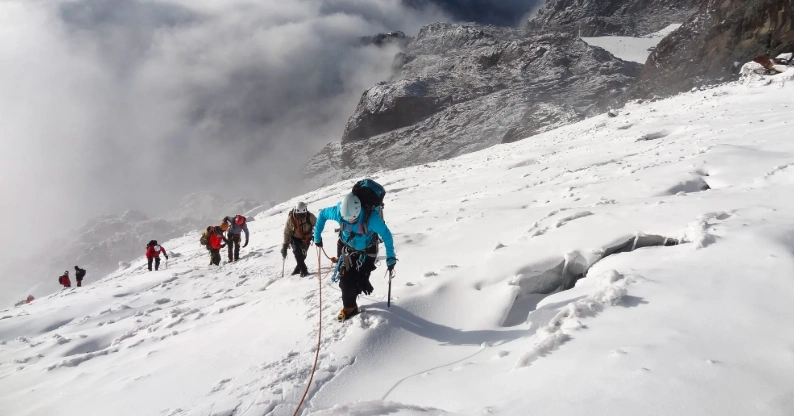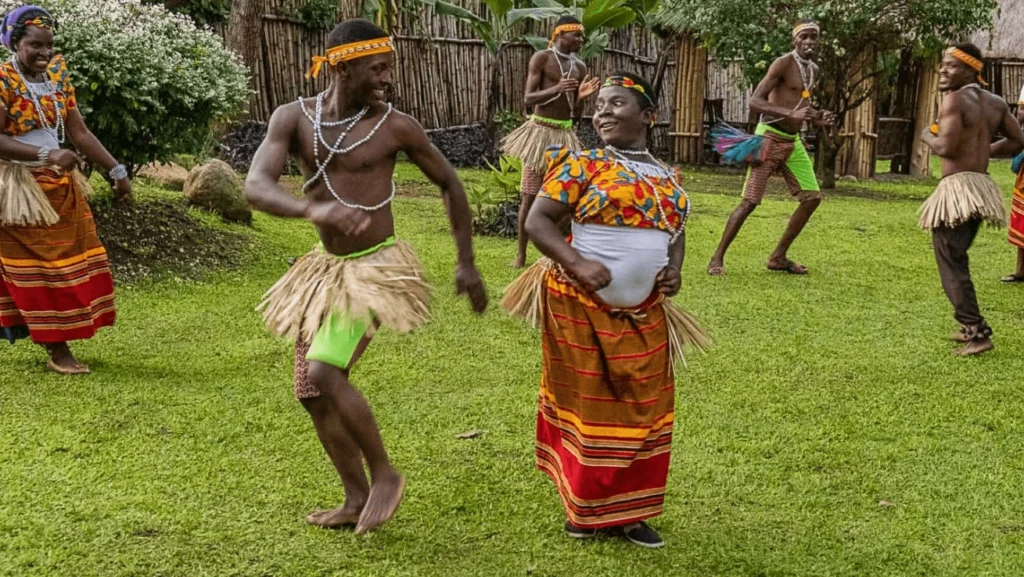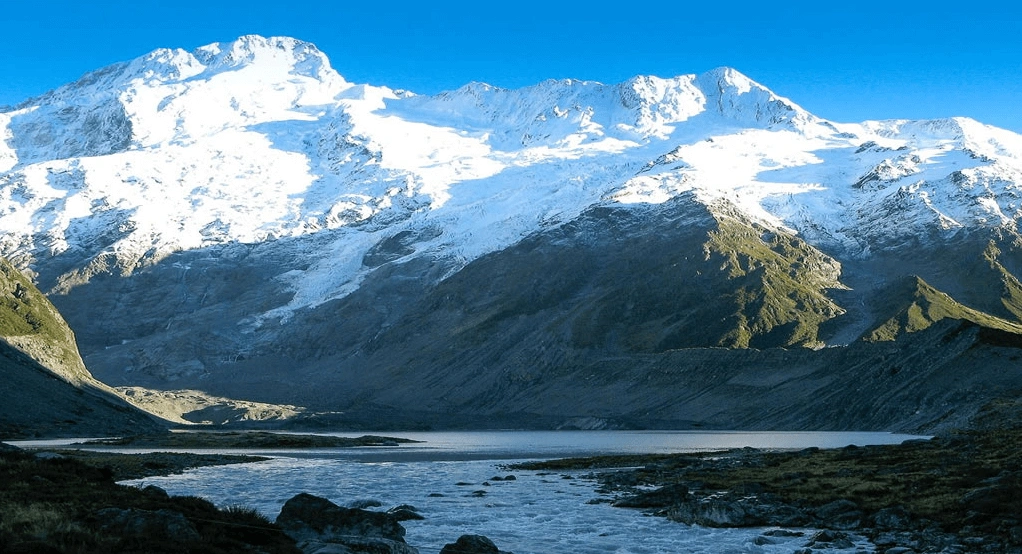Where equatorial ice meets otherworldly silence
At the heart of East Africa, straddling the border between Uganda and the Democratic Republic of Congo, the Rwenzori Mountains rise like a hallucination—jagged, snow-draped peaks cloaked in clouds, rooted in some of the wettest, most biodiverse terrain on the continent.
Dubbed the “Mountains of the Moon” by early astronomers and enshrined as a UNESCO World Heritage Site, this is no ordinary range. It’s one of the last places on Earth where you can hike through tropical forest, afro-alpine bog, and permanent glacier—on a single trail.
But this is not a mountain range built for Instagram conquest. The Rwenzoris demand more. More stamina, more humility, more time.
What they offer in return is something fewer and fewer places can: unfiltered wilderness. Days without crowds, nights without noise, and a landscape so surreal you stop reaching for metaphors and simply walk.
Key Takeaways
- The Rwenzori Mountains are Africa’s highest non-volcanic range and home to permanent equatorial glaciers
- Treks like the Central Circuit and Kilembe Trail offer immersive multi-day alpine journeys for serious hikers
- The park hosts rare species and unique vegetation found nowhere else on Earth
- Cultural interactions with the Bakonzo people deepen the experience beyond the trail
- Ideal for combining with gorilla trekking in Uganda or other hidden safari gems in Uganda
Why visit the Rwenzori Mountains?
Because most people don’t. And that’s precisely the point.
Unlike Mount Kilimanjaro or Mount Kenya—peaks that see tens of thousands of hikers each year—the Rwenzoris remain relatively untouched.
Not because they’re unimpressive, but because they’re uncompromising. There are no easy summit shortcuts here. No bustling base camps or souvenir stalls. Just sodden trails, towering lobelias, and long days under changing skies.
The Rwenzoris reward patience and persistence. They offer solitude in a world obsessed with convenience. And they host one of the most bizarre and beautiful ecosystems on Earth: a dreamlike afro-alpine zone with vegetation so unusual it feels prehistoric.
This is not a tick-the-box destination. It’s an initiation.

The trails
a) Central Circuit
This classic 7–9 day loop is the most established route and remains the best option for serious climbers. Starting at Nyakalengija, the trail weaves through montane forest, bamboo zones, giant heather, and boggy alpine valleys before ascending to Mount Stanley—Africa’s third-highest peak at 5,109 meters.
It’s strenuous. Trails are often muddy, steep, and slippery. Acclimatization is built in, but altitude sickness is still a risk. Those aiming for Margherita Peak will need basic mountaineering experience for the glacial ascent.
b) Kilembe Trail
A longer, quieter approach from the southern side, this 9–10 day route is more scenic, with better maintained huts and trails managed by Rwenzori Trekking Services. It’s a favorite for those looking to summit Mount Stanley without the crowds.
Both routes can be adapted for shorter treks (3–5 days) that don’t aim for the summit but still reach alpine heights. These are excellent for trekkers who want immersion without technical climbing.
For a deeper comparison of summit routes, contact us for guidance.
What you’ll see on the trail
1. Vegetation zones
The Rwenzoris host five major vegetation zones stacked like natural terraces:
- Tropical rainforest: Dense canopy, rich in primates and birdlife
- Bamboo-mimulopsis: Thickets filled with giant ferns and filtered light
- Heather-riparian: Moss-draped trees, eerie silence
- Afro-alpine bogs: Towering lobelias, groundsels, spongey terrain
- Glacier zone: Stark, icy, otherworldly
2. Wildlife highlights
Most animals remain elusive, but patient trekkers may spot:
- Rwenzori turacos
- Angola colobus monkeys
- Hyraxes, chameleons, and rare reptiles
- Duikers and, if lucky, leopard tracks
The real draw here isn’t charismatic megafauna—it’s endemism. The flora and smaller fauna evolved in near-isolation. What you see here, you won’t find anywhere else.
More on Primates in Uganda Beyond Gorillas and Chimps.
Cultural immersion with the Bakonzo community

Rwenzori doesn’t just mean mountain. In the Bakonzo language, it implies a home for ancestors, a place of reverence.
Most trekking staff—porters, guides, cooks—come from nearby villages. Treks offer not just mountain exposure but human connection. Ask questions. Share stories. Respect the land, as they do.
Cultural add-ons include drumming workshops, homestays, and visits to coffee cooperatives—often overlooked but quietly powerful ways to understand how tourism shapes (and sometimes reshapes) mountain life.
We expand on this in 5 Key Things to Know About Uganda’s Indigenous Communities.
Planning your Rwenzori trek
Best time to visit
Dry seasons are January–February and June–August. That said, “dry” is relative. These mountains catch clouds like a net. Rain is always a possibility.
Best time for safari in Uganda insights apply here too—though Rwenzori demands more resilience.
Permits and fees
You’ll need:
- Park entry permit (typically included in trek package)
- Peak climbing fees if summiting Margherita
- Porter, guide, and hut fees (required)
Costs are variable. We can walk you through it when you request a quote.
Accommodation
On-mountain: Basic but functional huts along both trails—expect bunks, shared space, cold water.
Foothill stays: Comfortable lodges near Nyakalengija and Kilembe offer pre- and post-trek rest. Some feature views of the range, firelit dining, and warm local hospitality.
Physical preparation and altitude awareness
This isn’t a casual hike. Multi-day endurance, slippery terrain, and elevation changes test even seasoned trekkers.
Prepare with:
- Cardiovascular conditioning (hiking, stair work, long walks with a pack)
- Altitude research and acclimatization strategy
- Lightweight layering and moisture management
See our Gorilla Trekking Fitness and Age Requirements page for conditioning tips that apply to Rwenzori as well.
Combining Rwenzori with other Ugandan safaris
Don’t silo your experience. The Rwenzoris pair beautifully with:
- Gorilla trekking in Bwindi or Mgahinga
- Wildlife safaris in Queen Elizabeth or Murchison Falls
- Chimpanzee tracking at Ngamba Island Sanctuary
- Wetland birding in Mabamba Swamp
With smart routing, you can experience Uganda’s glaciers, gorillas, and game—all within two weeks.
The Rwenzori Mountains aren’t for everyone. But if you’re seeking silence, solitude, and serious adventure, few places compare. Let us help you craft a tailored trek—whether it’s part of a larger journey or a standalone expedition.
👉 Request a quote to start planning your Rwenzori adventure.
FAQ
Is Rwenzori harder than Kilimanjaro?
Yes. It’s longer, wetter, and more technically demanding. But it’s also more rewarding for those who want a true wilderness experience.
Do I need mountaineering skills?
Only if summiting Margherita Peak. Otherwise, good hiking fitness is enough for lower alpine routes.
What should I pack?
Waterproof everything. Warm layers, quick-dry clothing, gaiters, gloves, walking poles, and altitude medication. See our Africa Safari Packing List That Works for East Africa.
Is it safe?
Yes. The park is secure, and treks are supported by local guides. Altitude and weather are bigger risks than politics here.
How far in advance should I book?
Ideally 3–6 months, especially if aiming for the dry seasons. See our guide: How Far in Advance Should You Book a Safari.

